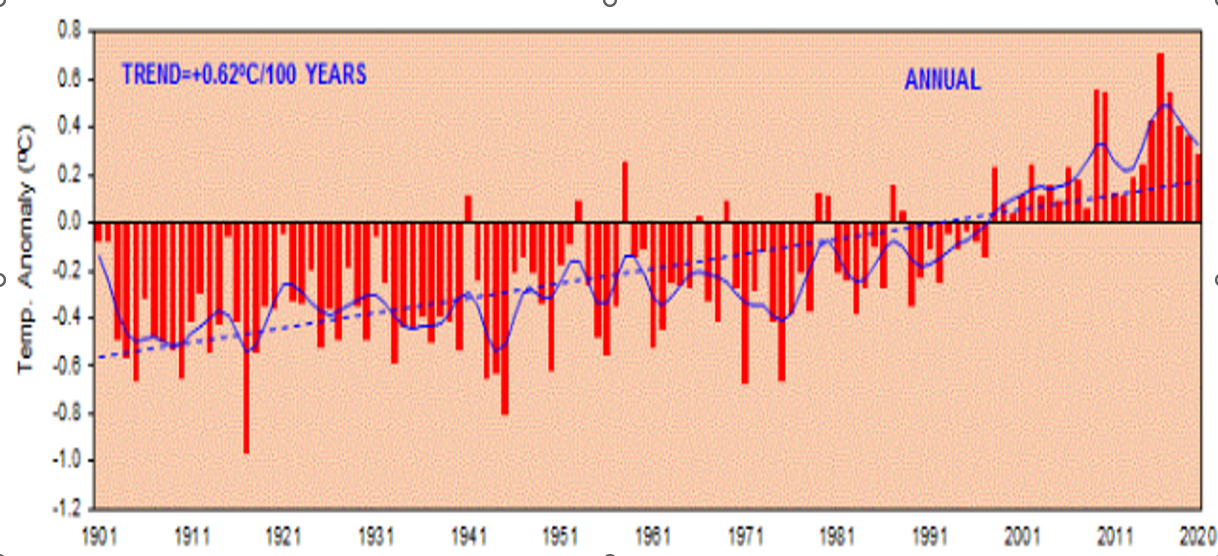The problem of increasing air pollution, climate change, and human health in India
Land Use Land Cover (LULC) is also an important component of climate change. The rapid expansion of urban areas has led to the loss of vegetation, arable land, and fallow land, thereby contributing to climate change.

Air pollution and climate change are serious concerns around the world. Climate change can affect air quality, and conversely, air quality affects climate change. Many air pollutants contribute to climate change. It affects the incoming sunlight that is reflected or absorbed by the atmosphere, with some pollutants warming the earth and others cooling the Earth. Air pollution and climate change are the biggest threats to human health in cities.
Greenhouse gas emissions are one of the main factors that change the atmospheric concentration of certain gases. Land Use Land Cover (LULC) is also an important component of climate change. Rapid urbanization has led to the loss of flora, arable land, and fallow land. At last, this leads to the formation of the Urban Heat Island (UHI). It has been observed that night time temperatures in UHIs remain high. Climate change is changing the pattern of temperature and precipitation.
People living in urban areas are more susceptible to heat-related health hazards. Heat waves are often accompanied by periods of stagnant air, leading to increased air pollution. Exposure to extreme heat can lead to heat stroke and dehydration, as well as cardiovascular, respiratory, and cerebrovascular diseases. Data from Envistats shows, more than 6400 people have died due to heat stress during the period 2010 -2019. The number is 4.3 times higher than during 1980-89. In 2015, approx. 2,000 deaths were recorded due to heat waves. The image below is showing the temperature anomaly of India from 1901 to 2020. The temperature rise is largely ascribed to GHG-induced warming and changes in LULC.

Increasing urbanization, industrialization, and associated anthropogenic actions are the main reasons that lead to carbon emissions and poor air quality. Poor air quality is one of the major environmental risk factors for human health. There has been an increase in air pollution in the cities of India over the last few decades. Its consequential human health impacts (such as asthma and cardio-respiratory illness) have drawn prominent attention in recent years. According to a report by the Air Quality Life Index, produced by the Energy Policy Institute at the University of Chicago, air pollution shortens the average Indian life expectancy by five years.
More than seven million people worldwide lose their lives due to diseases linked with pm2.5. India, a developing country with increasing population levels, is severely suffering from harmful effects of air pollution [WHO]. According to a Lancet study, pollution led to more than 2.3 million premature deaths in India in 2019. In Delhi, industry and residential actions contribute to 80 percent of total PM2.5. Below is the graph showing the most polluted cities in the world in the year 2021 based on the average pm2.5 data. India has the most polluted cities in the top 15.






